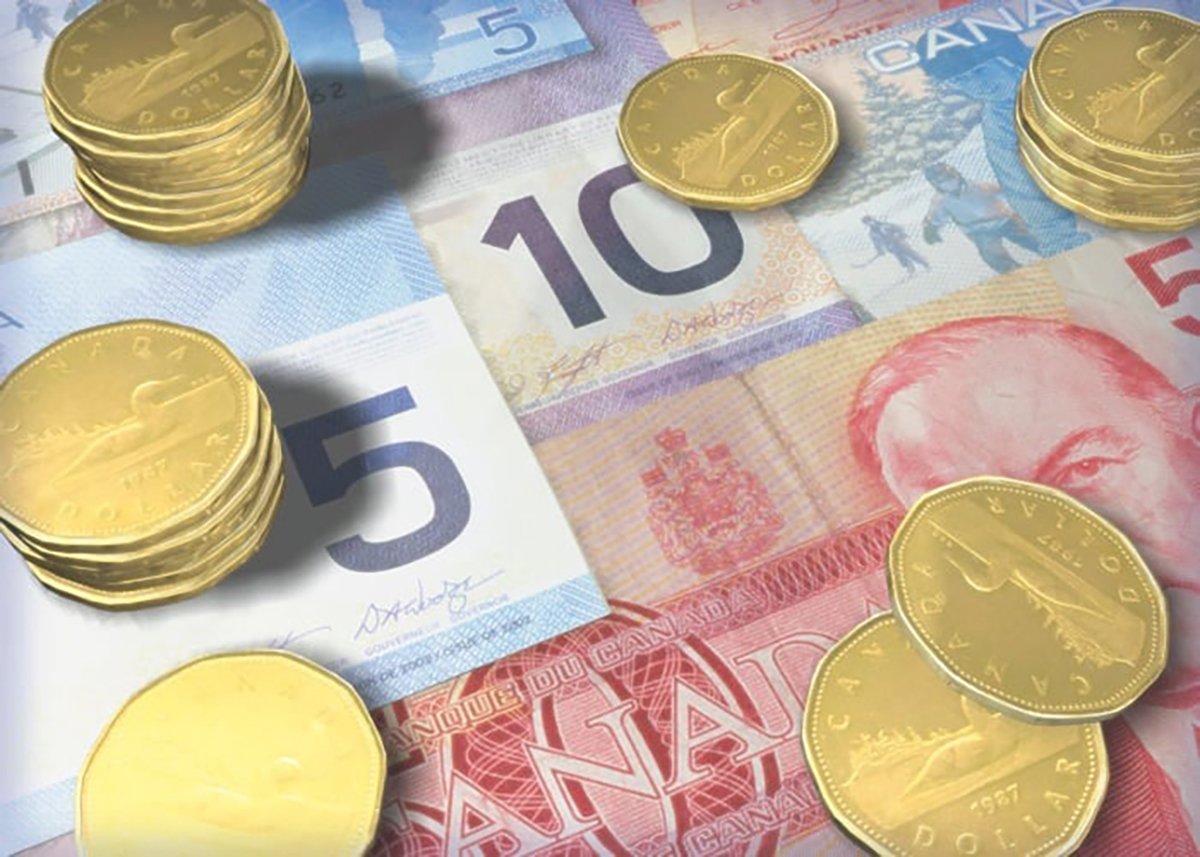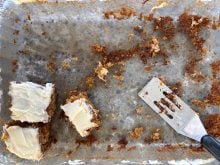This year for Christmas, we joined two other families and spent the
week skiing at Whitefish, Montana. The weather was ideal, not too cold,
and there was lots of soft snow.
Before leaving home we planned the week’s menu and grocery list. I have
included one of the recipes below. It made meal preparation easy and
left time for skiing, playing cards and games, sitting by the fire,
telling of the day’s skiing adventures and soaking in the hot tub.
Read Also

Producer profits remain under significant pressure
Manitoba farmers are facing down a double hit of high input costs, like fertilizer, and low grain prices as they harvest their next crop.
Each family made a main dish for an evening meal. On another evening,
everyone shared in the preparations for a fondue. Of course there was
turkey dinner on Christmas Day with leftovers the next day.
The children helped decorate the table for the Christmas dinner. Bits
of evergreen branches were laid along the centre of the table. Four big
red apples were carved out at the top to insert a tea light candle. The
apples were then placed in the evergreens and lit during the dinner.
Barbara’s peppery sausage & chicken stew
3 pounds chicken 1.5 kg
pieces without bone
(4 lb./2 kg with bones)
1 teaspoon each dried 5 mL
oregano, dry mustard,
dried marjoram
1/2 teaspoon each salt, 2 mL
pepper, ground cumin
1/4 teaspoon cayenne 1 mL
pepper
2 tablespoons 30 mL
cooking oil
11/2 pounds chorizo, 750 g
Italian or other spicy
sausage (thinly sliced)
12 cloves garlic, halved
4 carrots, cut in large
chunks
2 onions, sliced
2 sweet red or yellow
peppers, or combination
(cut in thin slices)
1 jalapeno pepper, seeded
and diced (optional)
1 28-ounce can 796 mL
Italian plum tomatoes
(drained and quartered)
1/4 cup chopped fresh 50 mL
parsley or coriander
Wipe chicken with damp cloth. Stir together oregano, mustard, marjoram,
salt, pepper, cumin and cayenne; rub over chicken pieces. Refrigerate,
covered, in large bowl for one hour.
In a large skillet, heat oil over medium-high heat, then brown sausages
well, about 10 minutes. With slotted spoon, remove to drain on paper
towels. Pour off all but 2 tablespoons (30 mL) of the drippings in the
skillet. Brown chicken, in batches, and transfer to large shallow
casserole.
In 2 tablespoons (30 mL) of drippings in the skillet cook garlic,
carrots and onions, covered, over medium heat for about seven minutes,
stirring occasionally, or until carrots are slightly tender. Add sweet
and jalapeno peppers and cook for two minutes. Arrange vegetables and
sausages around chicken pieces. Add tomatoes to skillet and bring to
boil, scraping up any brown bits. Pour over chicken.
Bake, covered and basting often with juices, in 400 F (200 C) oven for
45 to 50 minutes or until juices run clear when thickest part of
chicken is pierced. Sprinkle with parsley to serve.
Makes eight generous servings.
- This colorful stew is even better if made one day and reheated
another. Keep it covered and refrigerated, then reheat in 350 F (180 C)
oven for 30 to 40 minutes. On the ski hill we added cooked lentils to
the leftover stew to make a tasty lentil soup for lunch.
Cleaning jewelry
Dear TEAM: I had directions for making a solution for cleaning rings,
but unfortunately have lost it. It contained water, dish detergent and
ammonia, but I don’t remember the amount of each. – E.C., Lloydminster,
Alta.
Dear E.C.: I found in the book Household Hints by the Leader-Post
Carrier Foundation Inc., and published by Centax Books, that to clean
gold jewelry, use a solution of half ammonia and half water with a dash
of liquid soap. Let the jewelry soak in the solution for a few minutes
and then take a soft toothbrush and clean around etchings and stones.
Rinse well and polish with a soft cloth. Do not use this on pearls or
soft stones.
Fuel-efficient winter driving
The following information is from the Office of Energy Efficiency,
Auto-smart Program, Natural Resources Canada, c/o Canada Communication
Group, Ottawa, Ont., K1A OS9, 800-387-2000, http://oee.nrcan.
gc.ca/vehicles.
It has information and booklets on how to buy, drive and maintain your
car in order to save money, energy and the environment.
Reducing fuel use will cut the production of carbon dioxide, a major
greenhouse gas linked to climate change. One litre of gasoline, which
weighs 0.75 kg, can produce 2.4 kg of CO2.
Fuel consumption soars in cold weather. An engine can burn up to 50
percent more fuel for a short trip in the winter than for the same trip
in the summer.
Fuel consumption and pollution output are much higher in the first
minute or two after a cold start than when the engine has achieved
normal operating temperatures.
One reason is that when your engine starts up, it has to pump oil
throughout the block to lubricate moving parts. In a cold engine, the
oil is thick and resists flow, which means the engine has to work hard
to overcome internal friction. Thick oil also takes longer to
circulate, which allows metal-to-metal contact and increases engine
wear.
Fuel combustion is also much less efficient in a cold engine, and the
air-fuel mixture is richer (more fuel, less air).
The combined effect is a sharp increase in pollutants. To make matters
worse, the catalytic converter doesn’t work when it is cold. Until the
converter warms up, all the engine’s emissions pass through the exhaust
untreated.
One answer to this cold-engine is to use a block heater to warm the
coolant, which in turn warms the engine block and lubricants. In
temperatures of Ð20 C, block heaters can improve overall fuel economy
by 10 percent or more. Use an automatic timer to switch on the block
heater two hours before you plan to drive the vehicle. This is all the
time needed to warm the engine.
Avoid unnecessary idling. With computer-controlled, fuel-injected
engines, you need no more than 30 seconds of idling on winter days
before driving away. Anything more wastes fuel and increases emissions.
Ten seconds of idling can use more fuel than turning off the engine and
restarting it again. Every 10 minutes of idling wastes one-tenth of a
litre of fuel – and up to four-tenths if your vehicle has an
eight-cylinder engine.
If every Canadian motorist avoided idling his vehicle for just five
minutes a day, more than 1.4 million tonnes of CO2 would be spared from
entering the atmosphere and contributing to climate change.
A study conducted for the Office of Energy Efficiency concluded that
restarting a vehicle numerous times (as opposed to leaving it idling)
has a relatively small impact on engine components such as the battery
and starter motor. The study estimates that component wear caused by
restarting the engine adds $10 to the cost of driving, which will
likely be recovered several times over in fuel-cost savings.
For safety as well as fuel economy, clear snow off the vehicle before
driving away. Snow builds up in wheel wells and under bumpers adding
weight. Snow on the top of the car increases aerodynamic drag.
Check tire pressure regularly, especially after there has been a sharp
drop in temperature. Cold temperatures decrease the air pressure in
tires, which adds to the rolling resistance caused by snow and slush.
For every two pounds per square inch (14 kPa) of underinflation, fuel
consumption is increased by one percent.
















